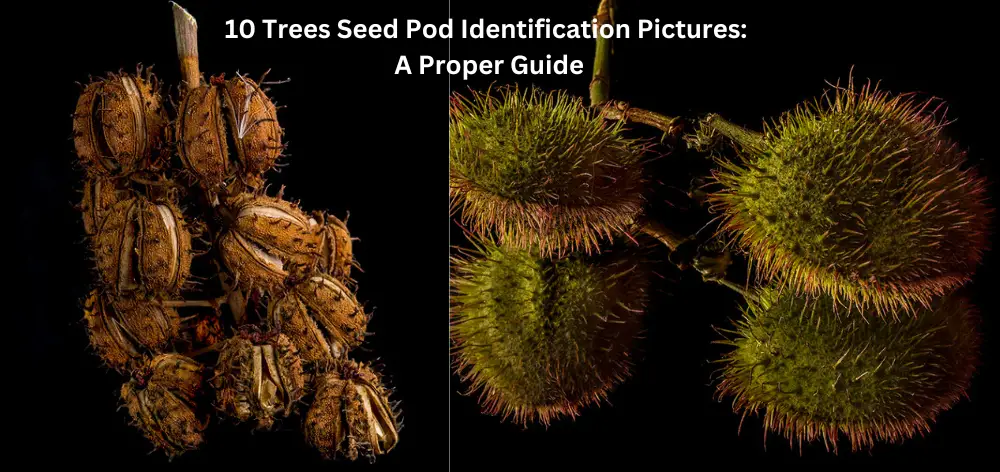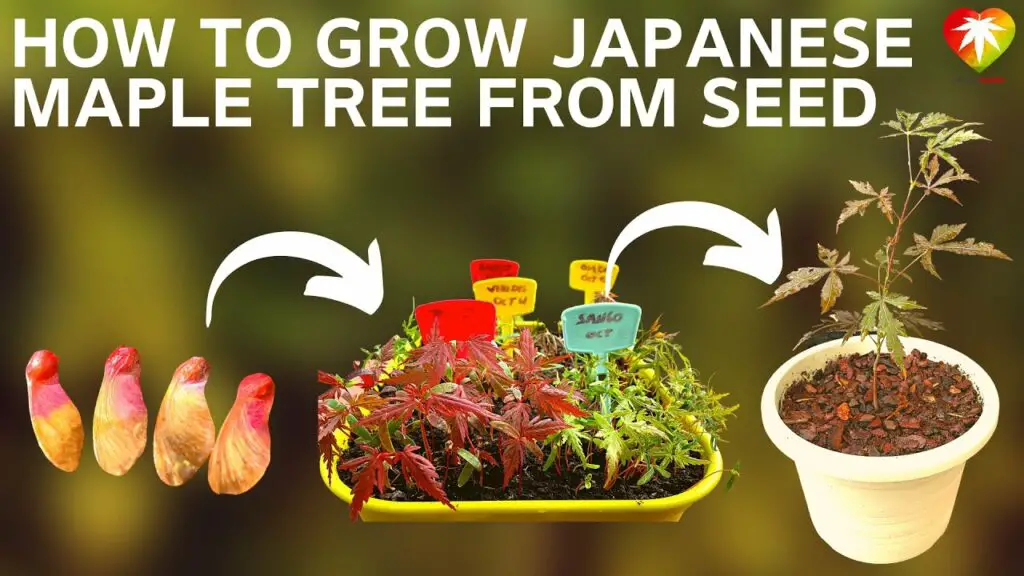Creating a comprehensive guide with 10 tree seed pod identification pictures involves capturing diverse species. Include clear images showcasing unique features like size, shape, and color Texture and Surface Details. Arrange them systematically with accompanying descriptions to aid users in accurately identifying tree seeds. Utilize the guide for educational or reference purposes.
Other common types include the maple seed, which has a winged shape; the pine cone, which is cone-shaped; and the nut, which is hard and round. By taking a close look at the shape and size of the seed pod, as well as its location on the tree, you should be able to identify the type of tree it came from.
If you’re a nature lover, you probably love trees. And if you’re a tree lover, you might be interested in learning about tree seed pods and how to identify them. There are many different types of tree seed pods, and each has its own unique characteristics.
In this blog post, we’ll take a look at some of the most common types of tree seed pods and how to identification them. One of the most common types of tree seed pods is the acorn. Acorns are small, hard seeds that are encased in a tough outer shell.
Identifying large tree seed pods involves considering size, shape, and texture. Examples include the large, woody pods of the catalpa tree or the winged samaras of the bigleaf maple. Reference guides and online resources can assist in accurate identification, enhancing your understanding of diverse tree species and their reproductive structures.
Here’s a simplified representation of a Tree Seed Identification Chart with a table for 10 tree types:
| Tree Type | Common Name | Scientific Name | Seed Type | Size | Shape | Color | Unique Features |
|---|---|---|---|---|---|---|---|
| 1 | Maple | Acer spp. | Samara | Small | Helicopter | Brown | Double-winged seeds |
| 2 | Oak | Quercus spp. | Acorn | Medium | Rounded | Brown | Cup-shaped cap |
| 3 | Pine seed | Pinus spp. | Cone | Varies | Conical | Brown | Woody scales |
| 4 | Birch | Betula spp. | Catkin | Small | Cylindrical | Brown | Pendulous flowering structures |
| 5 | Sycamore | Platanus spp. | Ball | Medium | Round | Brown | Hang in spherical clusters |
| 6 | Ash | Fraxinus spp. | Samara | Medium | Elongated | Brown | Winged seeds |
| 7 | Sweetgum | Liquidambar spp. | Capsule | Small | Spherical | Brown | Spikey, ball-like structure |
| 8 | Catalpa | Catalpa spp. | Pod | Large | Long | Brown | Long, bean-like pods |
| 9 | Willow | Salix spp. | Catkin | Small | Cylindrical | Green | Downy, fluffy structures |
| 10 | Magnolia seed | Magnolia spp. | Cone | Large | Conical | Reddish-Brown | Cone-like structures |
This table provides basic information for identifying tree seeds, considering their common and scientific names, seed types, size, shape, color, and any unique features.
How Do You Identify Tree Seed Pods?
Seed pods are the fruit of a tree, and just like any other fruit, they come in all shapes, sizes and colors. Some are small and insignificant while others are large and showy. But no matter what they look like on the outside, all seed pods have one thing in common: they contain the seeds of the tree that produced them.
So how do you identify a tree seed pod? The first step is to take a close look at the pod itself. What does it look like? Is it hard or soft? Smooth or textured? Open or closed?
Characteristics of Tree Seed Pods:
- Size and Shape Matter: When identifying seeds, size and shape are crucial factors. Seed size can vary significantly, from tiny grains to large nuts. Similarly, the shape can be diverse, ranging from round to elongated or winged. These characteristics often hold key clues about the plant species. Paying attention to size and shape enhances accuracy in identification, aiding both enthusiasts and botanists in recognizing and appreciating the remarkable diversity within the plant kingdom.
- Texture and Surface Details: Examining the texture and surface details of seeds provides valuable information for identification. Seeds can be smooth, rough, pitted, or textured in various ways. These features contribute to the protective mechanisms and dispersal strategies of the plant. Close inspection of surface details, such as patterns or markings, enhances the precision of seed identification. Texture serves as a tactile signature, aiding botanists and enthusiasts in unraveling the intricacies of plant diversity and ecology.
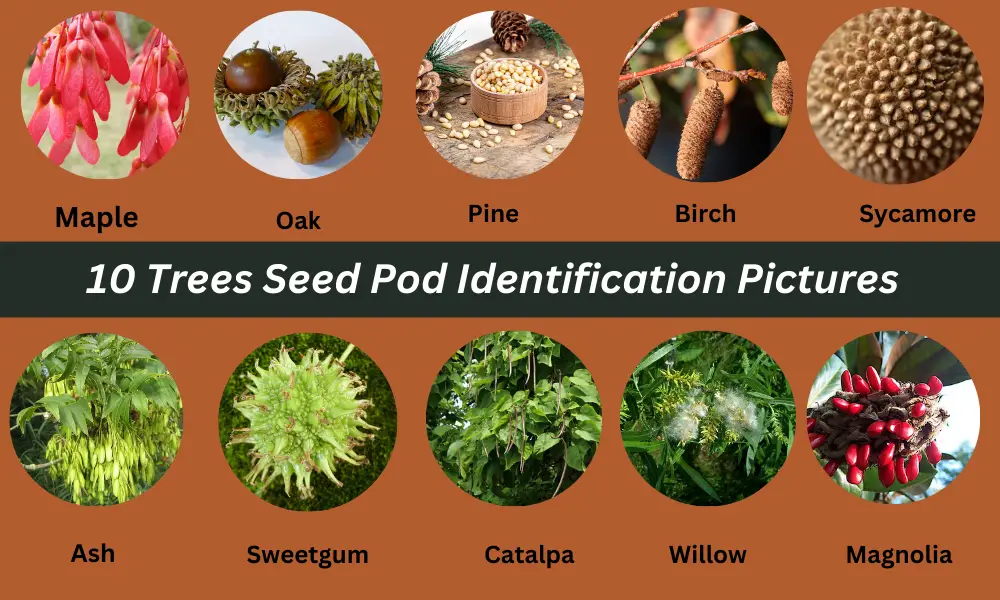
Utilizing Technology: Seed Pod Identification Apps
The Rise of Seed Pod Identification Apps
The surge in Seed Pod Identification Apps marks a new era for nature enthusiasts. These apps leverage image recognition and botanical databases to swiftly identify tree species through their distinctive seed pods.
Users can capture photos, and the apps provide instant information, fostering a deeper connection with the environment. This technological evolution empowers individuals to explore and understand the diverse world of trees, making nature education more accessible and engaging.
Choosing the Right App
Selecting the ideal Seed Pod Identification App demands consideration of key factors. Evaluate app reviews for accuracy and user satisfaction. Look for a comprehensive database covering a wide range of tree species, ensuring versatility. Consider user-friendly interfaces that streamline the identification process. Offline functionality is beneficial for outdoor use in areas with limited connectivity.
Verify app updates and developer support for ongoing reliability. Compatibility with your device’s operating system is crucial. Opt for apps with educational features, enriching your knowledge about trees. Prioritize privacy by reviewing permissions. Ultimately, choose an app aligning with your needs, preferences, and the reliability of its identification results.
Trees with Unique Seed Pods
- Triangular Seed Pods: Triangular seed pods, characterized by their three-sided shape, are intriguing botanical structures. Examples include the Eastern Redbud tree’s flat, triangular pods that undergo color changes as they mature. The Winged Euonymus, or Burning Bush, features distinctive winged triangular seed capsules. The triangular design aids efficient seed dispersal, often through wind. Observing these unique seed pods not only adds visual interest to nature exploration but also provides insights into the adaptive strategies of plants for successful reproduction.
- Diversity in Tree Seeds : The diversity in tree seeds is a fascinating aspect of the natural world. Tree seeds come in various shapes, sizes, and structures, reflecting the unique characteristics of each species. From the helicopter-like samaras of maples to the acorns of oaks and the elongated pods of catalpas, exploring this diversity provides insights into the reproductive strategies and adaptations of different trees. Understanding the range of tree seeds enhances appreciation for the intricate ways in which plants ensure their survival and contribute to ecological balance.
Honey Locust Tree Seed Pods
If you’re looking for a unique and beautiful tree to add to your landscape, you may want to consider the honey locust tree. This species is native to North America and is known for its stunning seed pods. The pods are slender and resemble beans, but they’re actually filled with a sweet, edible pulp.
Honey locust trees are relatively easy to care for and can tolerate a wide range of growing conditions. Here’s everything you need to know about honey locust tree seed pods. The honey locust tree (Gleditsia triacanthos) is a deciduous species that is native to North America.
It grows naturally in woodlands, but it has also been widely planted as an ornamental tree. The honey locust gets its name from the sweet pulp that fills its seed pods. This pulp is edible and quite delicious, making the honey locust a popular choice for people who want to add something unique to their landscape.
The seed pods of the honey locust tree are long and slender, resembling beans or peas. They typically measure 3-4 inches in length and are green when they first form on the tree. As they mature, the pods turn brown or black and eventually split open, revealing the edible pulp inside.
Each pod contains several seeds that are surrounded by this sweet pulp. The seeds can be eaten raw or cooked, but they aren’t particularly tasty on their own. Honeylocust trees are relatively easy to care for and can tolerate most soil types and pH levels.
They prefer full sun but will also grow in partial shade. Once established, these trees are quite drought-tolerant. However, young trees will benefit from regular watering during dry spells.
Honeylocust trees don’t require much fertilizer, but you can give them an annual dose of compost or manure if desired. These trees are generally very hardy and resistant to pests and diseases. However, they can be susceptible to scale insects and borers.
How Can I Find Out What Kind of Seeds I Have?
There are a few ways to find out what kind of seeds you have. One way is to look at the seed packet if you have it. The seed packet will usually have information on what kind of plant the seeds will grow into.
If you don’t have the seed packet, another way to identify your seeds is by their appearance. Different types of seeds can vary in size, shape, and color. You can also try doing a Google search for images of different types of seeds.
Once you’ve narrowed down what kind of seed you have, you can then look up information on how to care for that type of plant.
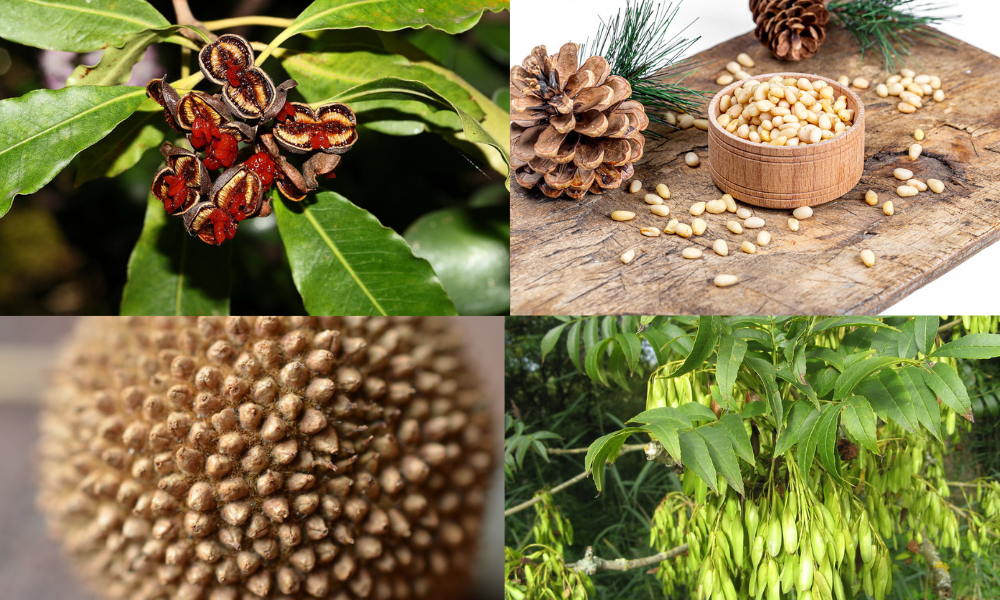
What Kind of Tree Has Seed Pods?
There are a few different types of trees that have seed pods, but the most common type is the leguminous tree. These trees are in the Fabaceae family, which includes many well-known plants like beans, peas, and peanuts. The seeds of these trees are typically encased in a pod that opens up when it is ripe.
Some other examples of trees with seed pods include the cashew tree and the horse chestnut tree.
What is This Seed Pod?
This is a seed pod! A seed pod is a fruit that contains seeds. The seeds are encased in a protective covering called the endocarp.
The endocarp protects the seeds from damage and dehydration. Seed pods can be found on many different types of plants, including trees, shrubs, and herbs. Some common examples of seed pods are acorns, coconuts, and beans.
Frequently Asked Questions
How do you identify seeds?
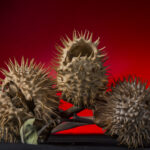
To identify seeds, observe their size, shape, color, and texture. Note any unique features or markings. Use a field guide or online resources for reference. Consider the plant’s characteristics and habitat. Perform simple tests, such as the water float test, to assess viability. Seek expert advice if uncertain. Document your findings and compare them to known seed descriptions for accurate identification.
How do I identify a seed pod?
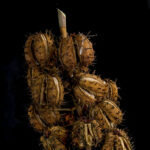
Identifying a seed pod involves examining its size, shape, color, and texture. Note any distinguishing features, such as spikes or hairs. Observe the plant’s overall characteristics and habitat. Utilize field guides or online resources for reference. Consulting botanical experts can aid in accurate seed pod identification.
What do seed pods look like?
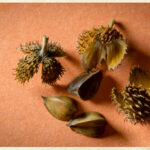
Seed pods vary widely in appearance. They can be elongated, round, or flat, exhibiting diverse colors and textures. Some are smooth, while others have spines or hairs. Shapes range from cylindrical to oval. Seed pods serve as protective structures for seeds, adapting to the characteristics of the plant species.
What type of tree has seed pods?
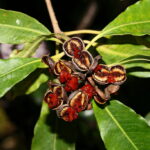
Various types of trees produce seed pods. Examples include the acacia tree with its distinctive elongated pods, the maple tree with helicopter-like samaras, and the catalpa tree with long bean-like pods. Trees across different species and families develop seed pods as part of their reproductive process.
Conclusion
The first step to tree seed pod identification is becoming familiar with the different types of tree pods. There are four common types of tree pods: legumes, acorns, cones, and Samaras. Legumes are fruits that contain a single seed in a pod that splits open along both sides when ripe.
The best-known examples of trees with legume fruits are the pea and bean family. Acorns are the fruit of oak trees and have a hard shell enclosing a single seed. The shell is attached to a stalk called the peduncle.
Acorns take two years to mature Cones are the fruit of coniferous trees such as pine, spruce, and fir. They have overlapping scales that protect the seeds inside and they mature in one season.
Samaras are winged fruits that spin as they fall from the tree which helps them disperse their seeds further from the parent tree. Maple trees have samaras for their fruit.
Related Articles:
How to Plant a Maple Tree Seed: A Step-by-Step Guide
 Dr Ahsanur Rahman, PHD
Dr Ahsanur Rahman, PHD
Wildfires Ravage Timberland: Pacific Loss Tops $11B
 Dr Ahsanur Rahman, PHD
Dr Ahsanur Rahman, PHD

